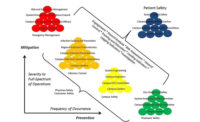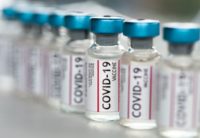In part one of this three-part series, COVID 19’s hazard analysis and risk assessment were covered along with applicable risk management options. In part two, hazard controls stemming from the risk control option of risk management will be covered.
Risk Control
If a risk is accepted, operations would resume as they did prior to the pandemic. If a risk is avoided, operations would be cancelled or postponed. If a risk is transferred, another agency with more particular training, equipment, experience or other qualifiers would perform the operation instead. However, if a risk is controlled, this too must be assessed and analyzed to determine the most effective means of hazard control.
1. Hazard Elimination - most effective.
When possible, having employees work at home and rescheduling meetings, trainings and other non-essential activities allows for quarantine and isolation from potential COVID-19 exposures by eliminating congregations. If not possible:
2. Engineering Controls (mechanical, barriers or other physical means) – 2nd most effective.
When possible, use of individual work areas, placement of glass barriers/partitions and other means to separate employees provides operational quarantine and isolation when working at home is not possible. If not possible:
3. Administrative Controls (processes to prevent, limit and reduce potential exposures) – 3rd most effective.
Many individual and organizational practices can help prevent potential disease exposures. These include staying home if ill or awaiting test results; social distancing by maintaining at least six (6) feet between each other; routine disinfection of common surfaces and items (such as shared tables, pool vehicles, door handles, pens and others); consistent hand hygiene throughout the day; avoiding handshakes, hugs and other physical contact; avoiding sharing vehicles and other close quarters; limiting personal interactions and other methods.
Read Part one of this series
Another administrative control is each facility or work area checking employees’ temperatures for indicators of a potential infection such as a rising temperature or fever (100.4 F or higher).
Face masks, or surgical masks
Additionally, each employee wearing a face mask over the mouth and nose helps by containing each person’s droplets (from sneezing, coughing, talking or even breathing). Face masks do not filter air-transmitted particles and do not protect from someone else’s droplets, but they do serve to contain each person’s own droplets. This allows each of us to ‘do our part’ to not transmit our germs.
Personal Protective Equipment (PPE)
PPE is necessary for employees who are not able to maximize other elimination, engineering and administrative controls due to requirements to provide services to persons known to be potentially infectious. PPE provides protection for the user’s skin, clothing and respiratory tract (protection from contact with liquid droplets and from breathing air-transmitted particles). PPE is subject to proper donning and doffing procedures (procedures related to putting PPE on and taking it off) to ensure protection and to avoid cross-contamination of people and areas. PPE is used based on the type(s) of potential exposure and requires diligence to applicable regulations and national consensus standards such as the Respiratory Protection standard (29 CFR 1910.134) and more.
With hazard controls implemented as per the risk management option selected, operations can safely continue. However, this doesn’t end the continual improvement cycle.
In part three of this series, the communication, indicator/validation and report/investigation processes rounding out the cycle are covered.



